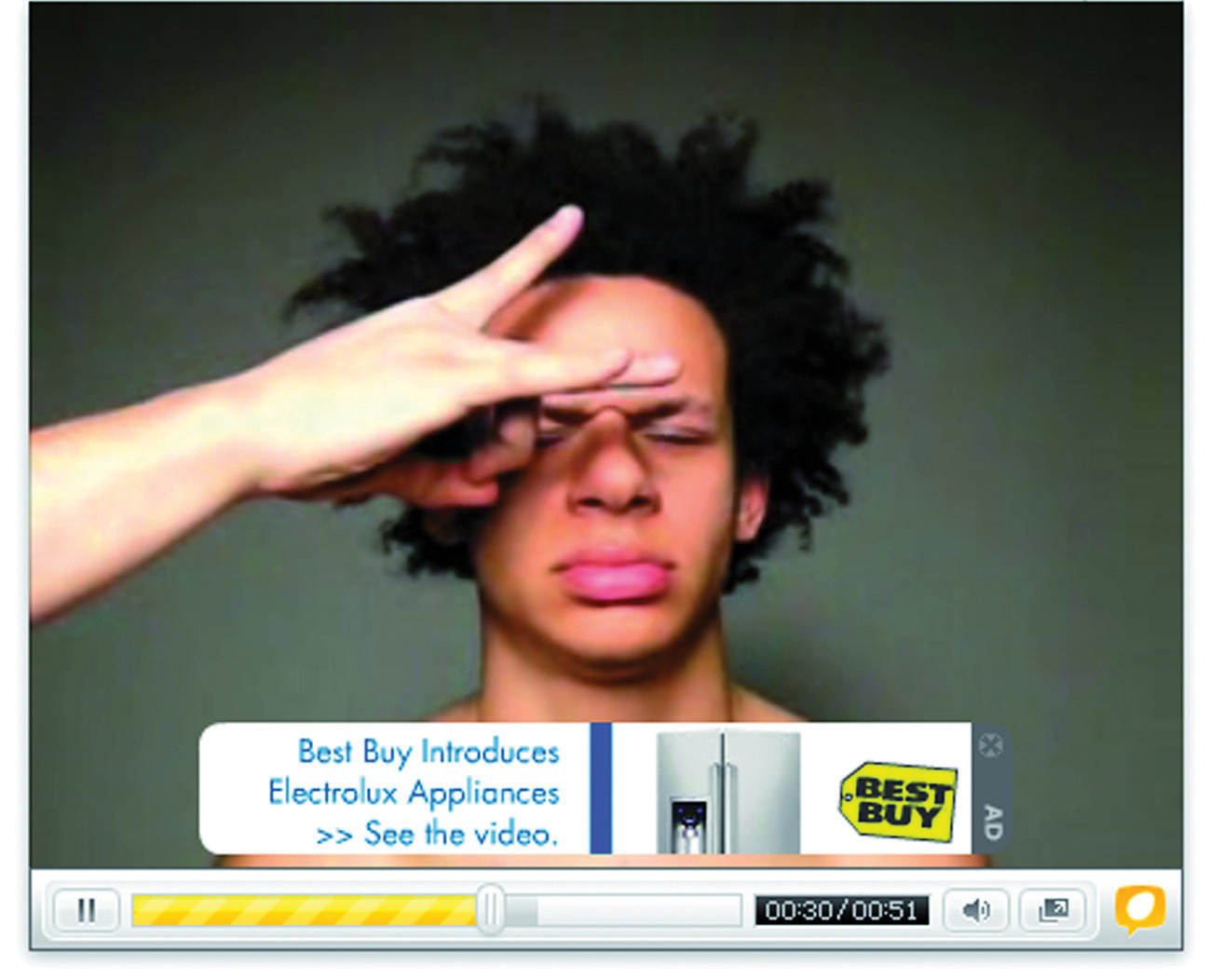Knowing the various types of display options and payment models available is helpful, but you might be wondering how to put this all together as you plan your campaign. The very first thing you need to determine when planning display advertising is the goal of your campaign. Are you embarking on a mainly branding campaign? Or is your main focus direct response?
Having determined the goals of your campaign, identify the key performance indicators (KPIs) that will let you know how you are succeeding. KPIs are factors that indicate how successful you are in reaching your goals. Click-through rate could be a KPI for a branding campaign, while for direct response you need to focus on conversion rates. (For more on KPIs, see Chapter 15 "Web Analytics and Conversion Optimization".)
Online advertising is an acquisition channel. It does not require that users actively seek an interaction, as pay-per-click (PPC) advertising and e-mail marketing do. So it is crucial that the advertisements are placed in front of the audience that is most likely to convert.
Investigate your target audience. What Web sites are they likely to be visiting? It is likely that the type of creative you may use and the payment model you follow will be largely determined by the Web sites on which you wish to advertise.
Niche Web sites with a smaller but probably more targeted audience will most likely charge a flat rate for display advertising, or a cost per acquisition (CPA) rate. They could probably be flexible in display options that they give you, but you will need to take into account their bandwidth costs if they serve the advertisements.
High-traffic Web sites with a broad audience will most likely charge on a cost per mille (CPM) basis. They will broker their advertising inventory through an advertising network, or even a number of advertising networks.
Knowing your goals, your target audience, and the format of your advertisements, it’s time to brief your creative team to ensure that you have the optimum banners for your campaign.
Your online advertisements will need to do the following:
Second, all advertising needs an appropriate landing pageThe page a user reaches when clicking on a paid or organic search engine listing. The pages that have the most success are those that match up as closely as possible with the user’s search query.. Whether this involves creating a micrositeMultipage ads accessed via click-throughs from initial ads. The user stays on the publisher’s Web site but has access to more information from the advertiser than a display ad allows. or merely checking that users reach an existing page on the Web site, ensure that click-throughs are not being wasted. Generally, sending advertising traffic to your home page is not a good idea as it allows the user to decide where to go next.
Animation attracts attention, but be wary of your ad being one of seven animated banners on a Web site. Banners should not be considered in isolation, but rather in the context of the Web site on which they will appear.
Web users respond well to being told what to do, and the content of an online advertisement should be concise and directional. Examples include the following:
While we have become used to the Internet as a free medium, where we can read and interact with any content we want, it is the fact that it is an advertiser’s medium that keeps the Internet free. That means that as the way we interact with content changes as technologies evolve, so advertising follows.
It used to be that the level of interaction a Web user has with a Web site could be measured by the number of pages of that Web site the user viewed. Now, technology such as Ajax and rich media such as video mean that the time spent on a Web page can be more meaningful than the number of pages viewed. The key word here is “engagement,” and technology and data analysis is working toward being able to determine how Web sites can quantify the level of engagement with a viewer.
VideoEgg (http://www.videoegg.com), which specializes in advertisements that appear in video clips and Facebook applications, introduced a pay-per-engagement pricing model on its advertising network in February 2008. With time spent by users on the site increasing, advertisers are able to build more interactive, more time-intensive advertisements. VideoEgg defines the engagement here as “a user-initiated rollover action that results in a sustained ad expansion. Once expanded, an ad may contain a video, game, or other rich content.”Zachary Rodgers, “VideoEgg Offers ‘Per Engagement’ Pricing,” ClickZ, February 19, 2008, http://www.clickz.com/showPage.html?page=3628492 (accessed May 1, 2008). Part of VideoEgg’s offering is to optimize the placement of so-called invitation ads to guarantee the requested number of engagements among an advertiser’s target demographic.
Figure 3.5

VideoEgg offers in-video advertising. The banner will show a video within the video.
But isn’t banner advertising dead?
A little research online will reveal plenty of commentary declaring the decline of display advertising. Increasingly, consumers are becoming both weary and wary of advertising. Click-through rates on banners are dropping, so some observers are questioning the effectiveness of display advertising. With the focus in eMarketing on tracking and measuring response and engagement, should a company spend money on less measurable activities such as “brand building,” where they are paying on a cost per mille (CPM) basis?
Consider this: Anecdotal evidence shows that banner advertising can increase click-through rates on contextual advertisements by 249 percent.Seth Godin, “The 249% Solution,” Seth Godin’s Blog, October 27, 2006, http://sethgodin.typepad.com/seths_blog/2006/10/the_249_solutio.html (accessed May 1, 2008). What does this tell us? Measurements should take place across all channels, and no channel should be utilized in isolation. The best results will be gained through an integrated and holistic approach to eMarketing.